PHYSICS
442/542
ATOMIC &
MOLECULAR
SPECTROSCOPY
"Where
we torture matter & watch it GLOW."
Fall 1988
Meet the
class....
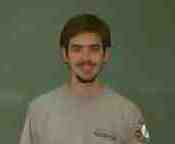
|
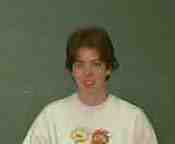
|
|
Eric Appelt
|
Laura Batt
|

|
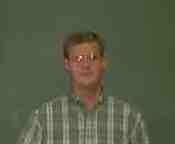
|
|
Chris Clark
|
James Clemens
|
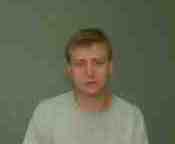
|

|
|
Joseph Pflieger
|
Peter Silverstein
|

|
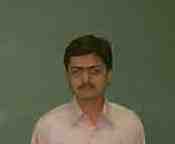
|
|
Brett Smith
|
Punit Swarup
|
Geez, these
photos are really poor quality - they must be replaced, even if it does
mean the page
loads more
slowly! I have stepped on the image size too much.
PROLEGOMENON
From courses that you have completed
in either modern physics or quantum mechanics, you may have
have gained the impression that Joseph von Fraunhofer, or perhaps even
Johannes Balmer, was the "first spectroscopist." Also, you may have
developed the idea that the dual nature (or wave/particle duality) of light
owes it's origination to James Clerk Maxwell (of Maxwell's Equations fame)
& Max Planck (and his blackbody radiation formula), with significant
support from Albert Einstein (via his explanation of the photoelectric
effect). While I do not wish to diminish the genius of those distinguished
gentlemen's contributions to the aforementioned avocation and revolutionary
(and disconcerting) concept, respectively, I would be at least woefully
incomplete in any presentation of the subject of SPECTROSCOPY if I did
not at least mention the contributions of Sir Isaac Newton. In 1666
at age 23, Newton began his experiments on dispersion.
| "I procured me a triangular glass prism to try
therewith the celebrated phenomena of colours." |
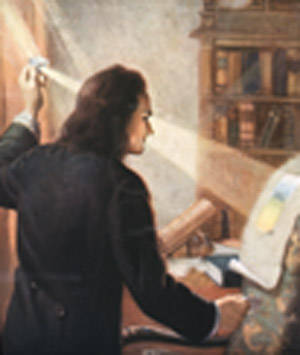 (Newton at
work)
Newton was the first
to recognize that "white light" is composed of all of the colors of the
visible spectrum, and he proved that the prism does not manufacture the
colors by somehow altering the the input light to varying degrees (as had
been believed for quite some time). Newton's proof came in the form
of direct observation with two such "triangular glass prisms." He
first dispersed white light into the visible spectrum and subsequently
reconstituted it into white light with the second prism. Had Newton
used a narrow slit as the secondary source of light in the experiment shown
above, he would have discovered (as did William Wollaston in 1802 &
Joseph von Fraunhofer in 1817) the dark absorption lines in the solar spectrum
that are now known as the Fraunhofer lines. Again, Newton's experiments
were carried out in 1666.
(Newton at
work)
Newton was the first
to recognize that "white light" is composed of all of the colors of the
visible spectrum, and he proved that the prism does not manufacture the
colors by somehow altering the the input light to varying degrees (as had
been believed for quite some time). Newton's proof came in the form
of direct observation with two such "triangular glass prisms." He
first dispersed white light into the visible spectrum and subsequently
reconstituted it into white light with the second prism. Had Newton
used a narrow slit as the secondary source of light in the experiment shown
above, he would have discovered (as did William Wollaston in 1802 &
Joseph von Fraunhofer in 1817) the dark absorption lines in the solar spectrum
that are now known as the Fraunhofer lines. Again, Newton's experiments
were carried out in 1666.
Newton is also known for his "corpuscular"
(i.e. particle) concept of light, although his work clearly embraced both
the corpuscular and wave theories of light simultaneously.
Although he rejected the wave character of light later in life and he never
offered any unequivocal (i.e. experimental) proof of his "corpuscular"
theory, Newton's early ambivalence concerning the nature of light was clearly
justified (in hindsight) given the elegant explanations offered by Maxwell/Planck/Einstein
more than two-hundred years later.
There
are many other significant players in the cast of spectroscopy characters
between Newton and Planck, and of course many more quantitatively
precise and complete players relative to atomic and molecular spectra
post-Planck. We will attempt to appreciate their contributions
over the next 15 weeks.
Please take a moment to appreciate the following photograph.
The structure shown is the birthplace of Isaac Newton. The double
rainbow is courtesy of Mother Nature and the photo is courtesy of the American
Institute of Physics.
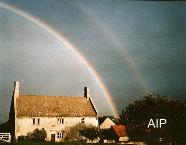 Wollsthorpe Manor
Wollsthorpe Manor
| This document last modified on Wednesday, 07-Oct-1998 00:04:18 EDT
and has been accessed [an error occurred while processing this directive] times. Please
address comments and suggestions to:
marcumsd@muohio.edu
|

















